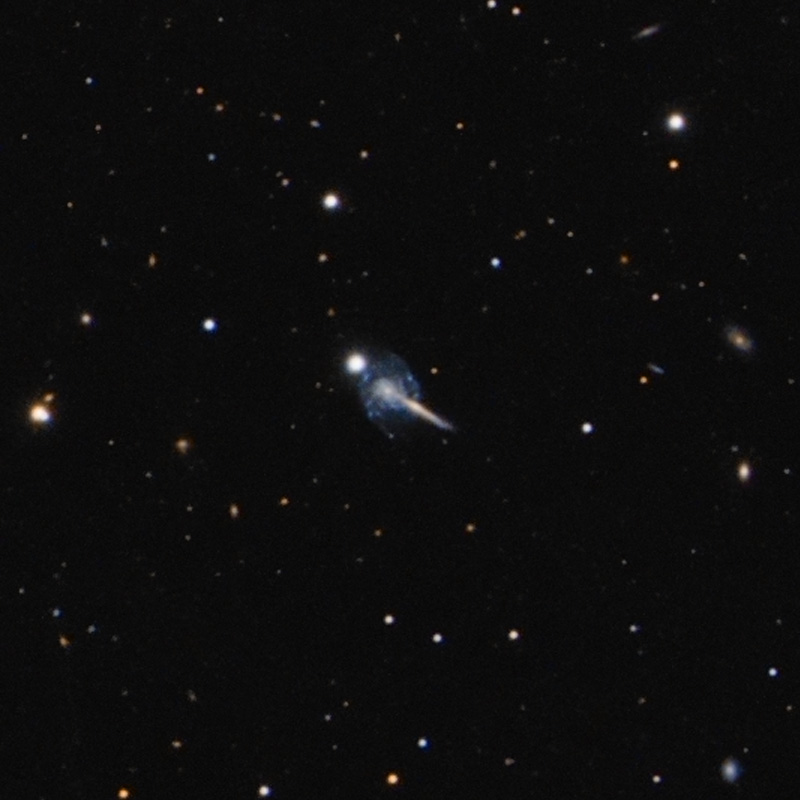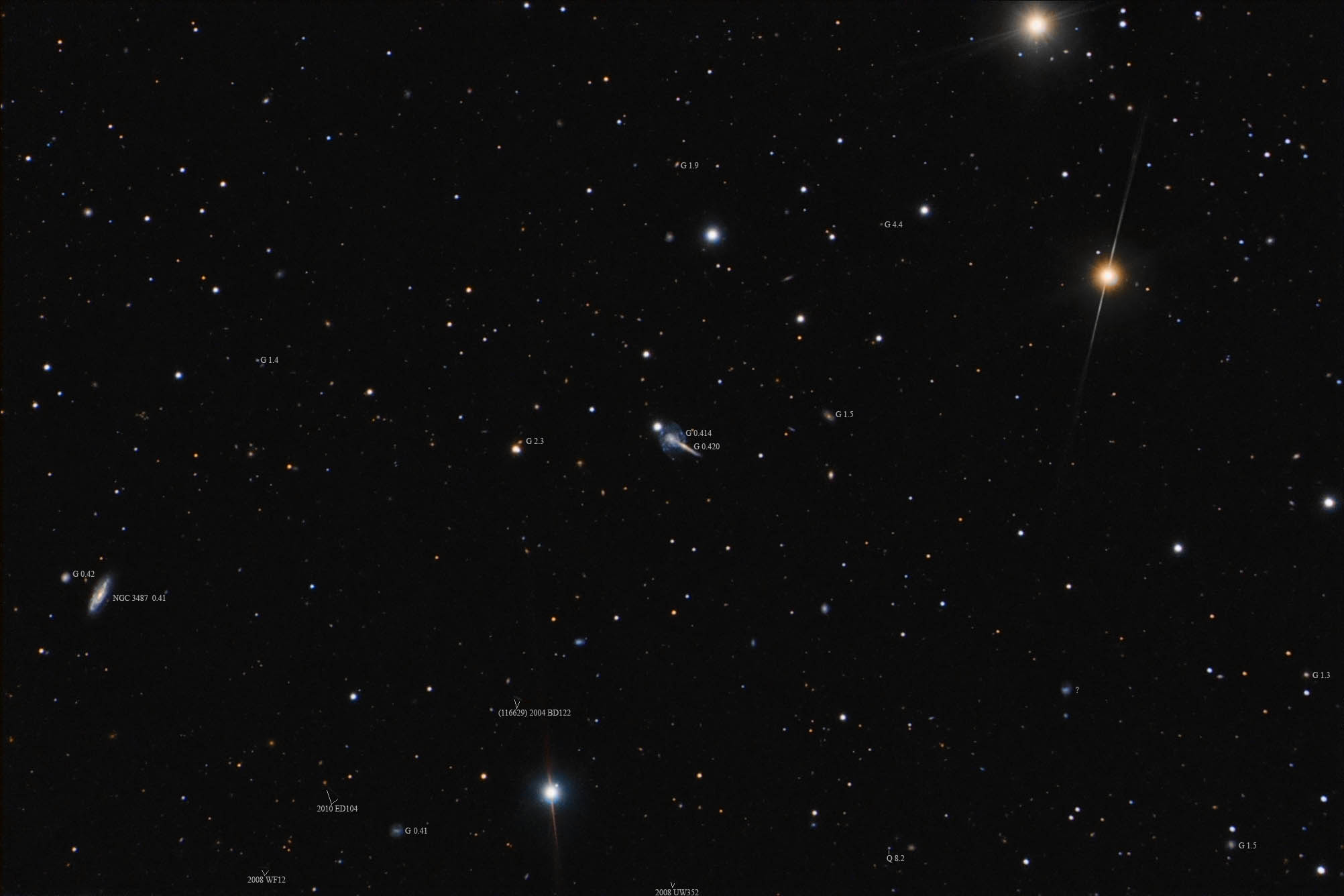Object name: ARP198Designation(s): ARP198, NGC3487, Arp was a very careful observer at the time of his Atlas but he missed seeing this one correctly. As his work on the atlas progressed he slowly developed some very strange ideas about galaxies emitting objects, such as quasars. At first, he seemed to use this category in a purely descriptive way. Meaning it looked like the galaxy's core had emitted something but not that it really did. Later he seemed to decide it was possible they did. Was this entry an influence in this direction?
Arp 198 is one Arp misunderstood. He classed it under "Galaxies: Material ejected from Nuclei." His note indicates he saw this one as a spiral with a huge spike when he says; "Spike points toward small nucleus; no spectra available [subsequently determined redshifts were consistent]." In fact, this is two separate galaxies, both spirals, one face on that is in front of an edge on spiral hiding much of the eastern side of the core (which is visible in the POSS 2 near IR plate). I would have thought this rather obvious even in monochromatic images. Apparently not. Today's color images, like mine, make this very obvious.
Arp 198 is located in central Leo at a distance of about 414 to 420 million light-years depending on whose redshift data you use. Sloan says 420 The face on spiral is UGC 6073b and VV 267a and is classed simply as a spiral. The edge on is UGC 6073a and VV 267b which is classed as S?.
I see no indication these are interacting. I find only one redshift listed for the face on spiral which is the 414 million light-year figure. The same source puts the edge on at 415 but the Sloan survey says 420 million light-years. In any case, these support the idea the face on is well in front of the edge on. While they are members of the same group they aren't interacting. They may in the future depending on their relative motion.
On the eastern edge of my image is NGC 3487/UGC 6092 (discovered by Lewis Swift on March 5, 1886) at the same distance as Arp 198. It forms a pair with UGC 6092a a bit further east according to the CGCG catalog. A note says that this pair forms a triplet with Arp 198. Oddly the CGCG catalog considers Arp 198 as a pair of galaxies. So shouldn't they say a quadruplet? Or does that note date back to Arp's time when he may have thought Arp 198 as one galaxy?
Many other interesting galaxies lack redshift data in this image that I'd like to know about. This is the best NED can do however.
There are three asteroids in the image that survived processing. A fourth was seen on the FITS but once color data was added was extremely hard to see. I cheated and increased its brightness some. The asteroids are:
(116629) 2004 BD122 magnitude 18.7
2010 ED104 magnitude 20.2
2008 WF12 magnitude 20.4
2008 UW352 magnitude 20.7 (brightened slightly to increase visibility)
Asteroids get a number after being recovered after having a good orbital determination for one full orbit. Thus three of these have yet to complete one orbit since discovery.
I had two nasty spikes caused by something on my filters. The lower one was both on the luminance and red filters while the upper right one was only on the luminance filters and faded over the course of the 4 frames. Apparently this was a light fog of some sort on the filters that was very localized. Never saw it like this before, especially on two filters exactly the same. That is very weird. I didn't try to process this out as when I have in the past it has looked worse than leaving them in. I did tone down the red color of that spike however.
Arp's image
http://ned.ipac.caltech.edu/level5/Arp/Figures/big_arp198.jpeg
14" LX200R @ f/10, L=4x10, RGB=2x10x3, STL-11000XM, Paramount ME Related Designation(s):2MASS J11004655+1735152, 2MASX J11004654+1735155, AKARI J1100466+173509, ARP 198, ARP198, ASK 619441.0, CGCG 095-084, CGCG 095-089 NED01, CGCG 1057.1+1755, CGCG 1058.1+1751 NED01, GALEXASC J110046.72+173514.8 , LDCE 0769 NED003, MCG +03-28-043, MCG +03-28-047, NGC 3487, NGC3487, NSA 111380, NVSS J105946+173910, NVSS J110046+173514, PGC 033116, PGC 033195, SDSS J110046.54+173515.1, UGC 06073, UGC 06092, USGC U343 NED01, UZC J110046.6+173514, VV 267, [PJY2015] 587742865817075795 , [TTL2012] 120751, | | 

